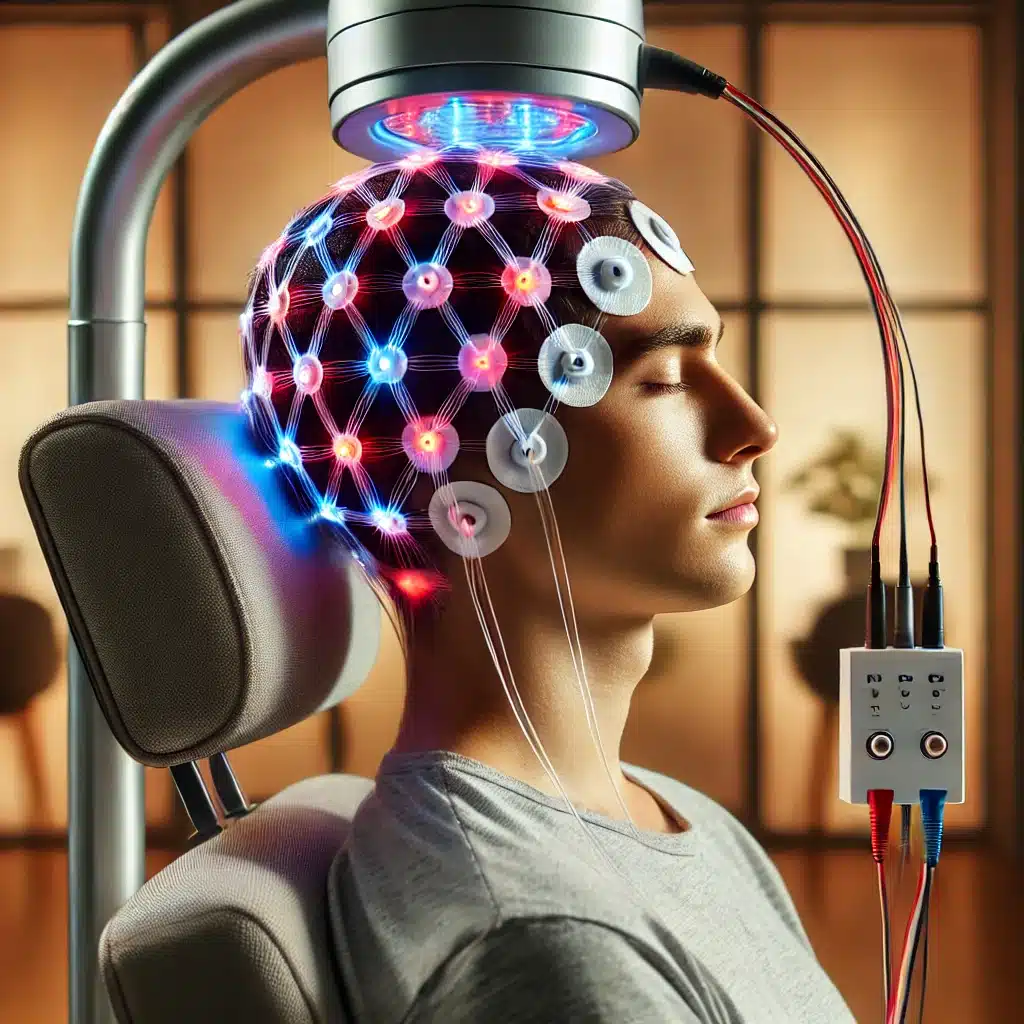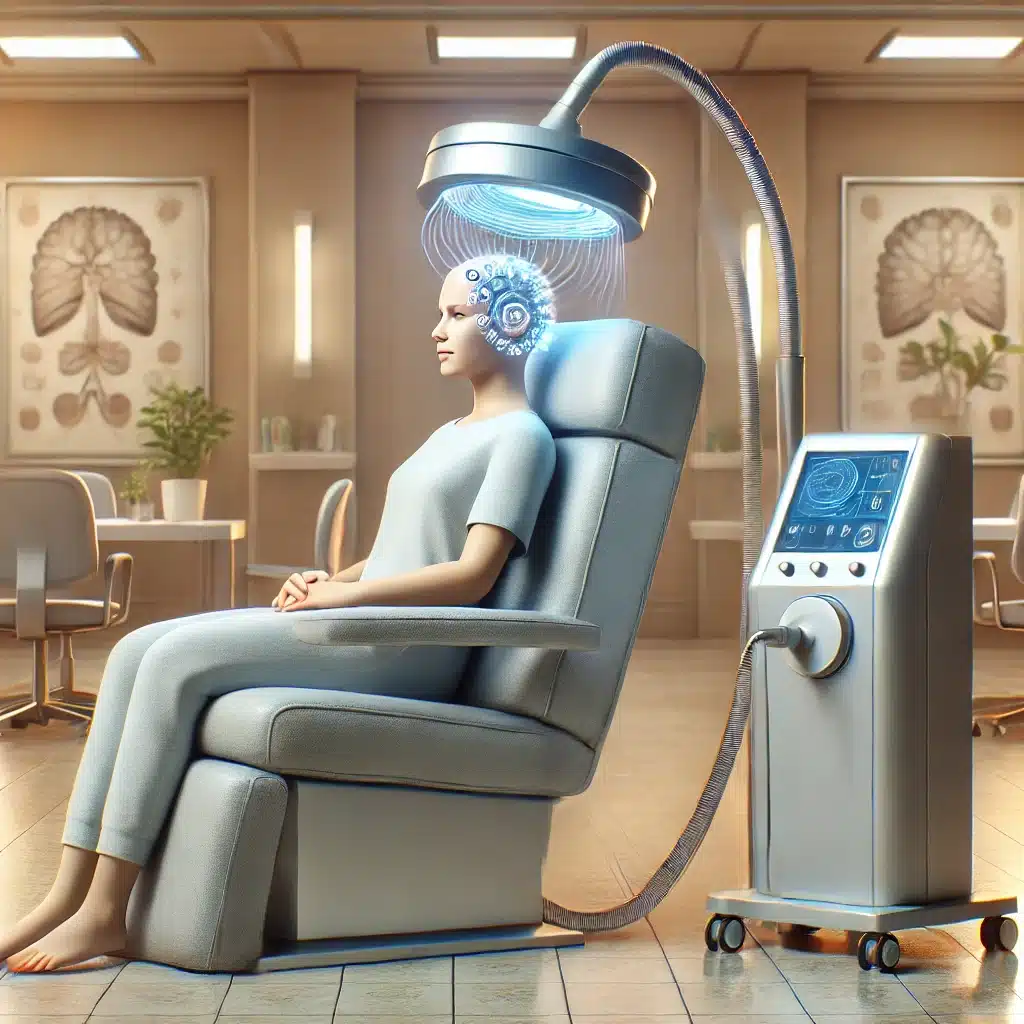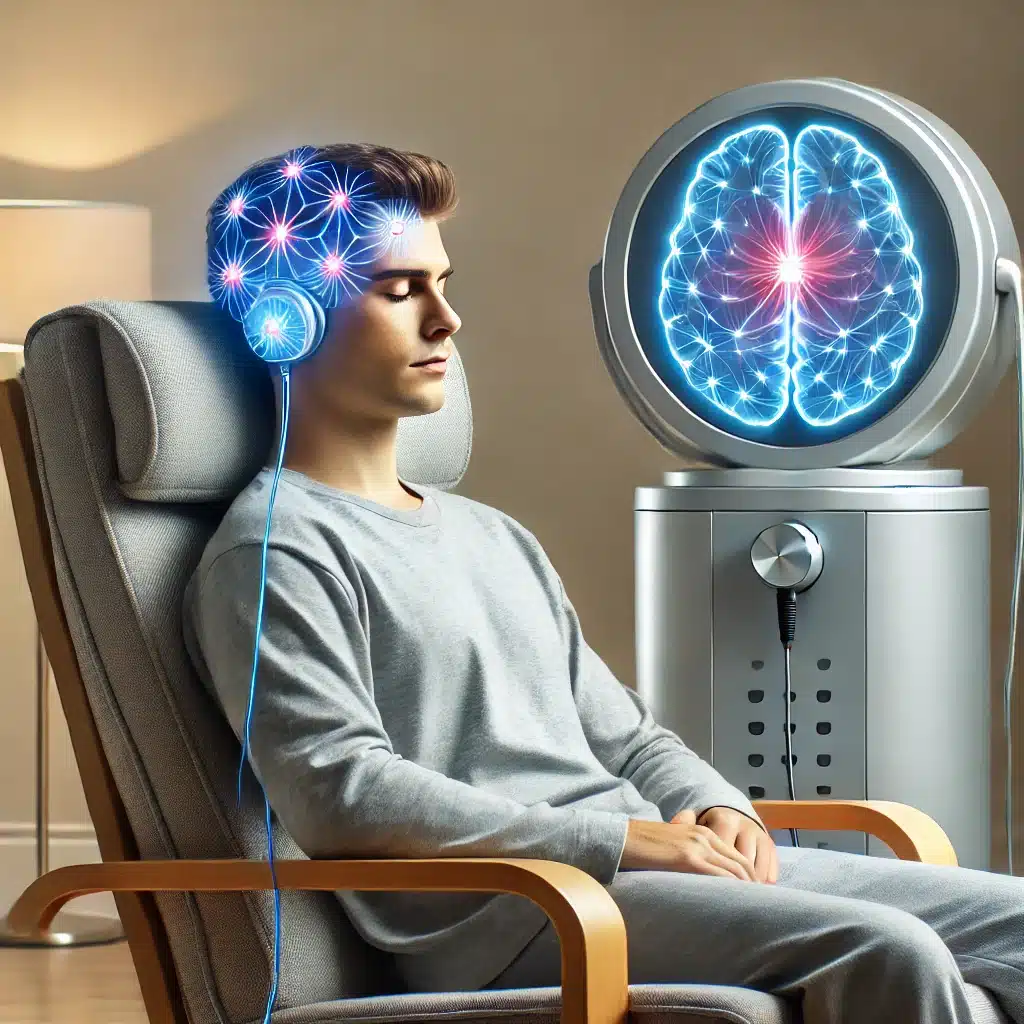Transcranial magnetic stimulation (TMS) is underutilized in treating major depressive disorder (MDD) despite showing significant clinical benefits, with barriers including insurance coverage and limited access.
Highlights:
- Study Scope: Analyzed real-world data from a large, multi-site psychiatric practice to evaluate TMS utilization and outcomes compared to usual care (UC) for patients with MDD.
- Patient Cohorts: Among 1,011 eligible patients, 9% received TMS, showing higher baseline depression severity and more medication failures than those receiving UC.
- Clinical Outcomes: TMS patients had a greater reduction in PHQ-9 scores (5.7 points) compared to UC patients (4.2 points), particularly notable among those with treatment-resistant depression.
- Underutilization: Despite its efficacy, TMS is not widely used due to factors such as restrictive insurance policies, limited access to TMS devices, and insufficient training in TMS for general psychiatrists.
- Recommendations: The study suggests addressing barriers to increase TMS adoption and proposes further research to evaluate broader implementation strategies.
Source: BMC Psychiatry (2024)
Major Findings: TMS for Major Depression is Under-Utilized (2024)
1. Utilization of TMS vs. Usual Care
Low Utilization: Out of 1,011 patients diagnosed with major depressive disorder (MDD) and qualifying PHQ-9 scores, only 89 (9%) received a full course of transcranial magnetic stimulation (TMS). The remaining 583 patients continued with usual care (UC), which primarily involved conventional pharmacotherapy and psychotherapy.
Severity & History: Patients in the TMS group had more severe depression symptoms at the start (PHQ-9 score of 17.9 vs. 15.5 in UC patients) and had tried and failed more antidepressant medications (on average 4 trials vs. 3.1 in UC patients).
2. Clinical Outcomes in TMS
Improvement in Depression Scores: On average, patients receiving TMS experienced a larger decrease in their PHQ-9 depression scores (a reduction of 5.7 points) compared to those receiving UC (a reduction of 4.2 points).
Response & Improvement Rates:
- TMS Group: At the end of the TMS treatment, 37.1% showed a response (≥50% improvement in PHQ-9 score), and 57.3% had clinically significant improvement (≥5-point reduction).
- UC Group: 31.2% showed a response, and 47.0% had clinically significant improvement.
3. Treatment-Resistant Depression
Enhanced Efficacy for Severe Cases: Among patients who had failed four or more antidepressant medications, those in the TMS group had a greater reduction in PHQ-9 scores (5.8 points) compared to those in the UC group (3.2 points).
Remission Rates: At the end of the TMS treatment, 19.1% of the TMS patients were in remission (PHQ-9 score below 5), though this rate decreased to 9.0% three months after the treatment. In the UC group, 16.7% were in remission by the end of the study period.
4. Duration & Follow-Up
Treatment Course Length: The TMS treatment courses were generally longer than those reported in existing literature, averaging 37 sessions over 70 days.
Sustained Benefits: Despite the initial high remission rate at the end of the TMS treatment, many patients relapsed within three months, reflecting the need for potential ongoing or maintenance TMS therapy.
5. Barriers to TMS Adoption
Insurance Restrictions: One significant barrier to wider TMS use is the requirement by many insurance companies for patients to fail multiple medication trials before approving TMS, despite evidence and FDA clearance for its use after just one failed trial.
Access and Training: Limited access to TMS devices and insufficient training in TMS procedures for general psychiatrists further hinder its broader adoption in clinical practice.
How TMS Treats Depression (Overview)

Transcranial Magnetic Stimulation (TMS) is a non-invasive procedure that uses magnetic fields to stimulate nerve cells in the brain.
Specifically, TMS targets the prefrontal cortex, a region involved in mood regulation.
The magnetic pulses create electrical currents that can enhance neuronal activity and connectivity, leading to improvements in depressive symptoms.
TMS Protocols for Depression
1. Standard Protocol: The most common TMS protocol involves daily sessions, typically 5 days a week, over a period of 4-6 weeks.
- Sessions: Each session lasts about 20-40 minutes.
- Frequency: Patients usually undergo 20-30 sessions in total.
- Intensity: The magnetic pulses are administered at a frequency of 10 Hz, which has been found effective in treating depression.
2. Deep TMS (dTMS): A variation of TMS that uses a different coil design to reach deeper brain structures.
- Sessions: Similar to standard TMS, but may vary in duration based on the specific device and protocol used.
- Frequency: Also typically administered 5 days a week for 4-6 weeks.
Duration of Antidepressant Effects from TMS
Immediate Effects: Many patients begin to notice improvements in their depressive symptoms within the first few weeks of treatment.
Long-Term Effects: The benefits of TMS can last for several months after the completion of the treatment course. On average, about 50% of patients who respond to TMS maintain their improvements for up to a year.
Maintenance Therapy: Some patients may require maintenance sessions to sustain the benefits, which can involve periodic TMS treatments (e.g., weekly or monthly) to prevent relapse.
Efficacy & Benefits of TMS in Depression
Response Rate: Approximately 50-60% of patients experience a significant reduction in depressive symptoms.
Remission Rate: About 30-40% of patients achieve full remission, where their symptoms are minimal or completely absent.
Safety and Tolerability: TMS is generally well-tolerated, with the most common side effects being mild scalp discomfort and headaches. Serious side effects are rare.
Study Overview: TMS vs. Usual Care (UC) for Depression (2024)

The study aimed to evaluate the real-world utilization and clinical outcomes of transcranial magnetic stimulation (TMS) compared to usual care (UC) for patients with major depressive disorder (MDD).
Sample
- Total Patients: 1,011 adult patients with a primary diagnosis of MDD and a baseline PHQ-9 score of ≥10.
- TMS Group: 89 patients (9%) received a full course of TMS.
- UC Group: 583 patients received usual care, excluding those who did not have a follow-up visit or received esketamine during the study period.
Methods
- Study Design: Retrospective cohort analysis.
- Inclusion Criteria: Patients with a clinic or telehealth visit in November 2020 and a follow-up visit within 6 months.
- Data Collection: Demographic information, utilization metrics, and outcome measures were extracted from electronic medical records.
- Outcome Measures: Changes in PHQ-9 scores, response rates (≥50% improvement in PHQ-9), clinical improvement rates (≥5-point reduction in PHQ-9), and remission rates (PHQ-9 score < 5).
Limitations
- Sample Size: The small size of the TMS cohort limited the statistical power and ability to match cohorts on disease severity.
- Potential Bias: Confounding factors, such as patient preferences and previous treatment history, could influence outcomes.
- Data Constraints: The electronic medical records used truncated the number of recorded prior antidepressant treatment failures, potentially underestimating the severity of treatment resistance in the TMS cohort.
What are common barriers to TMS utilization for depression?
Insurance Restrictions: Many insurance companies require patients to fail multiple antidepressant medication trials before approving TMS. Despite FDA clearance for TMS after one failed medication trial, this requirement delays access and prolongs patient suffering.
Limited Access: TMS devices are not widely available in many psychiatric practices, which limits the ability of psychiatrists to offer this treatment.
Training Gaps: Psychiatry training programs often have limited curriculum focused on TMS, leading to a lack of knowledge and comfort among general psychiatrists in recommending and administering TMS.
Specialty Clinics: Many TMS treatments are provided in specialty clinics rather than integrated into general psychiatric practices, creating additional logistical barriers for patients who primarily receive care in general settings.
Awareness & Perception: There is a lack of widespread awareness among both patients and healthcare providers about the efficacy and benefits of TMS, contributing to its underutilization.
How can we fix the under-utilization of TMS for major depressive disorder?
Insurance Policy Reforms: Advocate for changes in insurance policies to align with FDA guidelines, allowing TMS to be used after one failed antidepressant trial. This would reduce delays and improve early access to effective treatment.
Increasing Access: Encourage psychiatric practices to invest in TMS devices and integrate TMS services into their treatment offerings. This could be facilitated through financial incentives or grants for acquiring TMS equipment.
Enhanced Training: Expand TMS training in psychiatry residency programs and offer continuing education for practicing psychiatrists. Providing comprehensive training can increase confidence and competence in using TMS.
Integrated Care Models: Promote the integration of TMS into general psychiatric practices rather than relying solely on specialty clinics. This would make TMS more accessible to a broader patient population.
Raising Awareness: Increase efforts to educate both healthcare providers and patients about TMS through informational campaigns, professional seminars, and patient outreach programs. Highlighting the success rates and benefits of TMS can shift perceptions and encourage its use.
Policy Advocacy: Work with professional organizations and advocacy groups to push for policy changes at both state and federal levels that support broader adoption and coverage of TMS.
Conclusion: TMS is Effective but Under-Utilized for MDD
Transcranial Magnetic Stimulation (TMS) represents a promising and effective treatment option for patients with major depressive disorder (MDD), particularly those who have not found relief with traditional antidepressant medications.
By stimulating specific regions of the brain associated with mood regulation, TMS can significantly reduce depressive symptoms and, in many cases, achieve full remission.
Although the benefits of TMS can last for several months, ongoing maintenance sessions may be necessary to prevent relapse.
Despite its efficacy, TMS remains underutilized due to barriers such as insurance restrictions, limited access, and insufficient training among psychiatrists.
Addressing these challenges and increasing awareness of TMS can help more patients access this beneficial treatment, ultimately improving their quality of life and reducing the overall burden of depression.
References
- Study: Utilization and outcomes of transcranial magnetic stimulation and usual care for MDD in a large group psychiatric practice (2024)
- Authors: Jesse Bastiaens et al.







